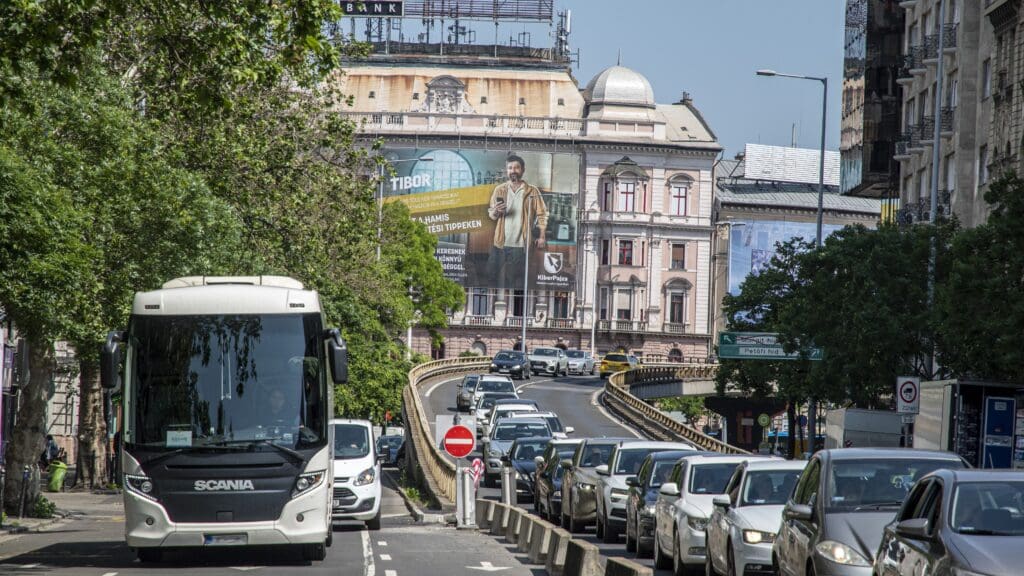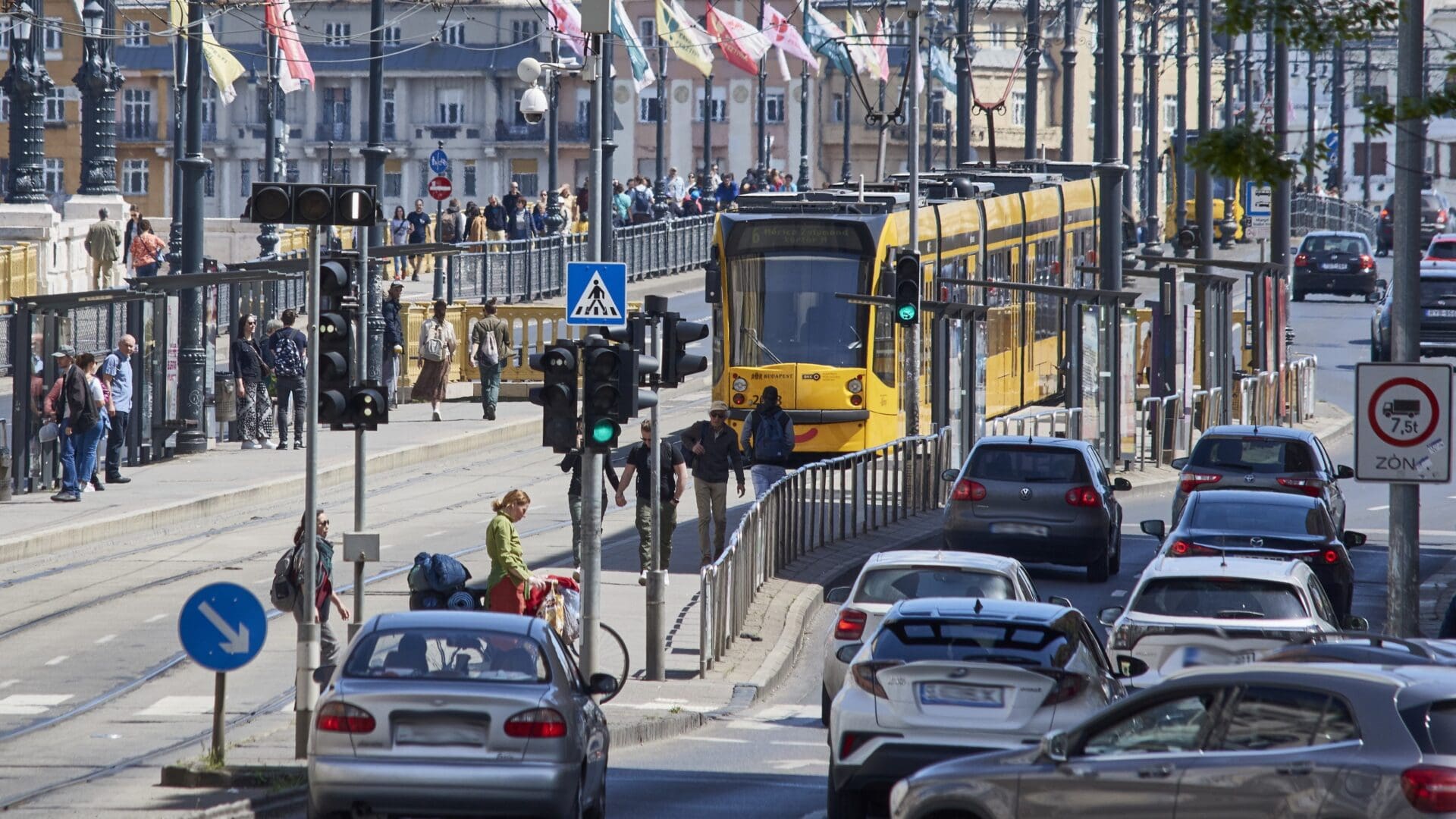The following is a translation of an interview written by Anna Bakai, originally published in Magyar Krónika.
About thirty per cent of Budapest residents live amidst persistent noise that damages their health. Magyar Krónika spoke with Mihály Berndt, noise expert at the Herman Ottó Institute Nonprofit Ltd, about the invisible enemy of our physical and mental health: the noise that surrounds us all and gradually seeps into all spaces.
***
Let’s start with a basic distinction: what is sound and what is noise?
When I give lectures to students, I usually ask them this question, and most of them answer that noise is what is loud. In this case, I ask them whether they consider music in a concert noise, and, of course, their answer is ‘no’, even though concerts are usually quite loud. Then I ask them if they consider the softly ticking clock to be noise when they are trying to sleep—of course, the answer is ‘yes’. By thinking together, we usually come to the realisation that we call ‘noise’ what we consider disturbing, and it does not depend solely on the volume. Therefore, noise does not originate in our ears, but in our brains. In addition to the physical characteristics, the connection and relationship to a sound determine whether it will become noise or not.
We often hear about how much noise we live in today, especially in big cities. Why is this a problem?
A friend of mine said that people often think it’s sort of an ‘elitist concern’ to worry about noise when we have so many, much more tangible problems. The bad news is that environmental noise has many impacts that we don’t even notice in everyday life because they have long-term harmful effects on health. Today, in Europe,
noise ranks second after air pollution in terms of environmental damage that causes death,
and this cannot be taken seriously enough. Perhaps we underestimate the magnitude of this problem because it is not like a factory chimney blowing smoke, an oil slick floating on the surface of the water, or the garbage that covers our neighbourhoods. It is invisible.

It’s quite interesting that we believe one of our senses, in this case, our sight, when there is a problem, but we don’t trust the other, our ears.
And it’s also a big difference that we can close our eyes if necessary and hold our breath for a while, but we cannot close our ears, so we’re not able to protect ourselves against noise in this way. Many people think that high sound pressure levels and loud noises bother only our ears, but this is not the case. The sound pressure level that characterises the environments of average citizens damages not only their ears but also their entire body.
What does noise exactly do to us?
Unfortunately, a lot of things. It causes sleep disturbances, contributes to blood pressure disorders and heart problems, increases stress levels, has been proven to increase the risk of diabetes, and has a bad effect on our hormonal balance as well.
That’s a pretty terrifying list. But how much noise do we really live amidst?
Obviously, a lot depends on the kind of environment someone lives in; people living in big cities are most at risk, but by no means equally. There are noise effects that can be said to be extreme, such as the whine of sirens, which, although can be disturbing, have a relatively short duration and occur only rarely, so they are not the biggest issue. The main problem is with the general noise level with which we live all the time,
and which we often don’t even notice anymore.
However, it still affects us. Nevertheless, the good news is that we already have quite accurate data on daily noise levels, so we also know which areas of larger cities need the most intervention, and where reduction of noise pollution is necessary. These data are represented on noise maps, where anyone can see how much noise they actually live with on a daily basis.
How much noise do Budapest residents live their lives amidst?
More than thirty per cent of the capital’s population lives amidst persistent noise that most likely damages their health.
The situation is somewhat better in cities in the countryside, where ‘only’ twelve to fifteen per cent of the population lives in an environment that endangers their health. If the air in a city is bad, an alarm can be issued, traffic can be restricted, and then a big wind comes and blows out the bad air, thus the situation improves. The biggest problem is that this is not possible in the case of noise—the pollution we live in is continuous.
What is the main cause of noise pollution?
It’s clearly traffic, especially road traffic, which is responsible for about ninety per cent of the pollution.


What can we do to reduce the harm? After all, roads cannot be relocated or closed, and thirty per cent of the urban population cannot be moved to the countryside at one blow.
Roads cannot be moved, but we do have the means. Public transport is constantly being modernised, new trains are being put on suburban lines, new trams are being brought into the cities, and tracks and bridges are being upgraded. In Miskolc, for instance, a few years ago, the tramway track was completely renovated, which reduced the noise level by half, as if half as many trams were using the tracks. Another example is when the Hungarian State Railways (MÁV) introduced Flirt motor trains for suburban traffic, which only make a tenth as much noise as the old vehicles. These things all mean a huge difference. However, it would also be very important to reduce the traffic passing through city centres areas, at least the freight traffic. This wouldn’t be impossible at all: if we look at the city centre of Pécs on the noise map, for example, we can see that it’s all green, although this was not always the case. In this South-Transdanubia city, a significant traffic calming was implemented, freight traffic has been spread out, buses have been diverted, and where there used to be huge traffic, there is none now. But as well as upgrades, it would be just as important that
new investments should always take into account how much lasting noise they are going to release
into the surrounding area—it’s actually a very small effort, and yet it can have huge benefits down the line.
What can the average person do in their own environment to free themselves from the harmful effects of noise pollution, if they cannot afford to move away from the busy city centre?
Unfortunately, not much, because the noise is always there, and it cannot be completely excluded. What can help is a good quality, soundproof window or door; modern ones can already block out a lot of noise. But there are much simpler things to do as well: if we have to go somewhere, let’s not walk along the busy boulevard, but off the main routes, along a side street with less traffic. If we look at the noise map, we will see that there is a huge difference between them. And now there are these headphones—sometimes I can hear what my fellow passengers are listening to metres away on the noisy metro! That ear is ruined. It can regenerate to some extent, but above a certain level, the hair cells die and there’s nothing you can do about it. When I talk to students about the dangers of listening to music with headphones, I can see that they are very sceptical. Then I play to them a recording of what a fellow human being with thirty per cent hearing loss hears. After that, I always see the shock on their faces as it dawns on them that our hearing is really not a game.
Related articles:
Click here to read the original article.








